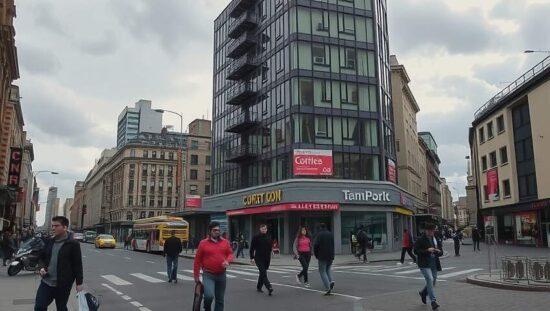Germany’s economy stagnated in the third quarter of 2025, marking a concerning development for Europe’s largest economy and raising questions about the government’s growth strategies. Preliminary data released by the Federal Statistical Office (Destatis) revealed a standstill in Gross Domestic Product (GDP) compared to the previous quarter, confirming earlier estimates. This lack of growth is attributed primarily to weak export performance, even as investment showed signs of modest recovery.
While gross investment rose slightly by 0.3 percent, driven largely by a 1.1 percent increase in investment in equipment – pointing to encouraging trends in vehicle and machinery purchases – a decline in construction investment (-0.5 percent) offers a mixed picture. Private consumption, a crucial engine of growth, unexpectedly contracted by 0.3 percent, the first decline since the fourth quarter of 2023, primarily due to a decrease in spending on leisure and hospitality services. This downturn contrasts with continued, albeit smaller, growth in government spending (+0.8 percent).
The external sector also proved to be a drag on the economy. Exports of goods and services fell by 0.7 percent, with a significant drop in service exports such as royalties and franchise fees, indicative of potentially broader challenges in the competitiveness of German intellectual property and related services. While goods exports demonstrated relative resilience, the decline in service exports adds weight to concerns surrounding the long-term viability of certain key sectors. Imports, however, remained unchanged.
The manufacturing sector suffered a substantial 0.9 percent decline, impacting overall production across various sub-sectors. While pharmaceutical and electrical equipment production demonstrated growth, the construction sector continued its downward trend. Service industries performed relatively better, with information and communication and trade, transport and hospitality sectors showing positive contributions.
Despite the overall stagnation, year-on-year comparisons painted a slightly more positive picture, with GDP up 0.3 percent overall. However, this is largely due to the robustness of specific sectors like public services and hospitality, while the manufacturing and construction sectors continue to struggle. The rising number of employed – a staggering 46 million- has not been sufficient to offset these underlying weaknesses.
A key element contributing to this static growth is the rising cost of living, evidenced by a 5.1 percent increase in average gross wages. This, combined with a 3.4% reduction in private consumption year-on-year and a slight reduction in the savings ratio to 9.6 percent suggests a squeeze on household finances and a potential slowdown in consumer demand. The decline in corporate and property income also warrants closer scrutiny.
The data points to a complex economic landscape for Germany, demanding a re-evaluation of government policies focused on bolstering exports, stimulating private investment and mitigating inflationary pressures to revitalize growth and restore confidence in Europe’s economic powerhouse. The fragility of the manufacturing sector and the dependence on specific service exports are major cause for political discussion and policy intervention.





